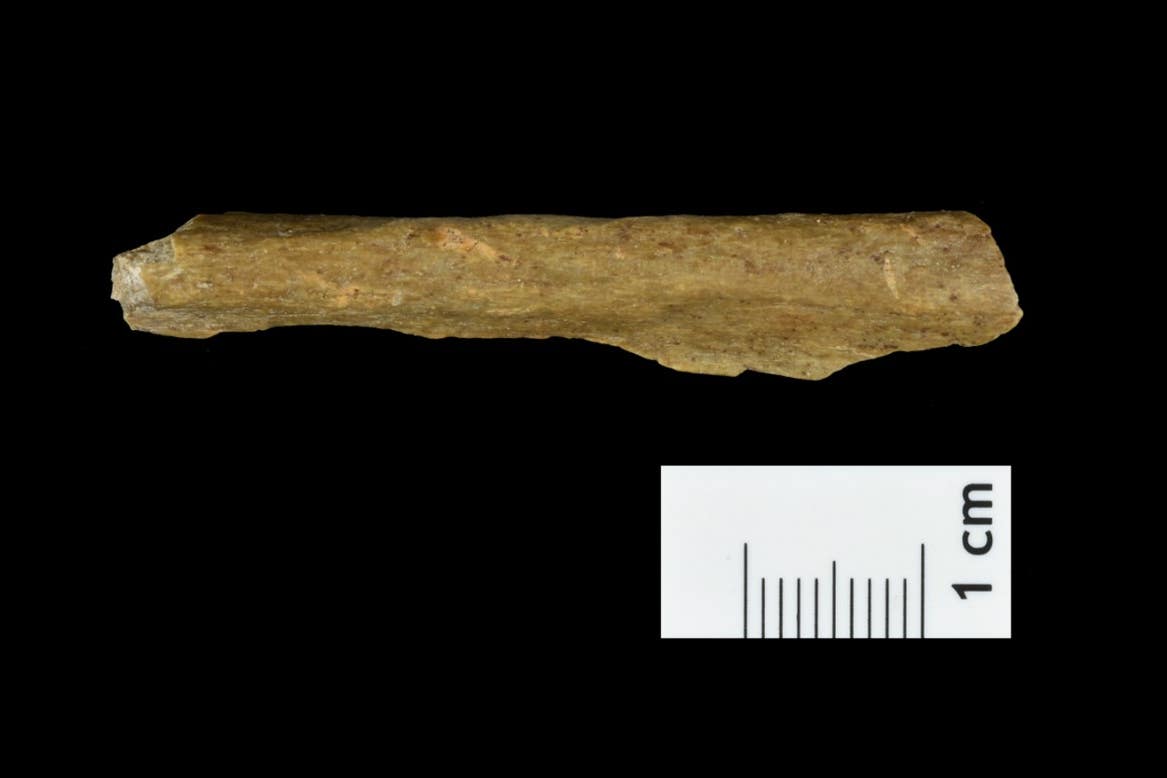Scientists’ discovery rewrites history of early humans in Europe
Fossils from 45,000 years ago were discovered at the site in Germany

Your support helps us to tell the story
From reproductive rights to climate change to Big Tech, The Independent is on the ground when the story is developing. Whether it's investigating the financials of Elon Musk's pro-Trump PAC or producing our latest documentary, 'The A Word', which shines a light on the American women fighting for reproductive rights, we know how important it is to parse out the facts from the messaging.
At such a critical moment in US history, we need reporters on the ground. Your donation allows us to keep sending journalists to speak to both sides of the story.
The Independent is trusted by Americans across the entire political spectrum. And unlike many other quality news outlets, we choose not to lock Americans out of our reporting and analysis with paywalls. We believe quality journalism should be available to everyone, paid for by those who can afford it.
Your support makes all the difference.Modern humans ventured into northern Europe under extremely cold climate conditions and were living side by side with Neanderthals more than 45,000 years ago, according to new evidence.
Average temperatures around that time would have been somewhere between 7 to 15 degrees Celsius below modern day temperatures – similar to that found in today’s Siberia or northern Scandinavia, scientists say.
They also add that Homo sapiens would have lived in the same region as Neanderthals for several thousand years before the latter went extinct.
The findings, reported in three separate papers in Nature and Nature Ecology & Evolution, suggest these early European settlers were more resilient to Europe’s harsh cold environments than previously thought.
Moving in small groups, they would have shared the landscape with large carnivores, like hyenas and cave bears, according to an international team of archaeologists.
Sarah Pederzani from the University of La Laguna and the Max Planck Institute for Evolutionary Anthropology, said: “Until recently it was thought that resilience to cold-climate conditions did not appear until several thousand years later, so this is a fascinating and surprising result.
“Perhaps cold steppes with larger herds of prey animals were more attractive environments for these human groups than previously appreciated.”
For the study, the team re-excavated a cave site in Ranis, a small town in Thuringia, Germany.
The site was first explored by archaeologists between 1932 and 1938 when they unearthed long, leaf-shaped stone blades.
It was initially thought these tools were made by Neanderthals, but a re-excavation between 2016 to 2022 also revealed human fossils for the first time, suggesting the artefacts were likely to have been created by humans.
Dr Geoff Smith, a zooarchaeologist from the University of Kent and the Max Planck Institute for Evolutionary Anthropology, said: “Our most exciting finding from this research was the identification of new, well dated Homo sapiens fossils from Ranis.
“There were no previously identified human remains from Ranis so holding these in my hands for the first time was both exciting and nerve-racking in equal measure.
“These fossils represent the earliest evidence for our species north of the Alps and their presence during periods of extremely cold, harsh climates suggests that early H. sapiens were more adaptive than previously thought.
“Our reconstructions of temperature at Ranis show average temperatures between 7-15 degrees below modern day temperatures.”
The researchers said their discovery also challenges the view that Neanderthals disappeared from northern Europe long before the arrival of modern humans, adding that this hypothesis “can now be rejected”.
The scientists also said their work adds to existing genetic evidence that humans and Neanderthals lived side by side and occasionally interbred.
Jean-Jacques Hublin, emeritus director at the Max Planck Institute for Evolutionary Anthropology in Leipzig, Germany, said: “It turns out that stone artefacts that were thought to be produced by Neanderthals were in fact part of the early H. sapiens tool kit.
“This fundamentally changes our previous knowledge about this time period: H. sapiens reached northwestern Europe long before Neanderthal disappearance in southwestern Europe.”
The team also found more than a thousand bone fragments belonging to animals that frequented the caves, such as bears and hyaenas, as well as those that may have been a part of the humans’ diet, such as deer and horses.
Dr Smith said: “Zooarchaeological analysis shows that the Ranis cave was used intermittently by denning hyaenas, hibernating cave bears, and small groups of humans.
“While these humans only used the cave for short periods of time, they consumed meat from a range of animals, including reindeer, woolly rhinoceros, and horses.”